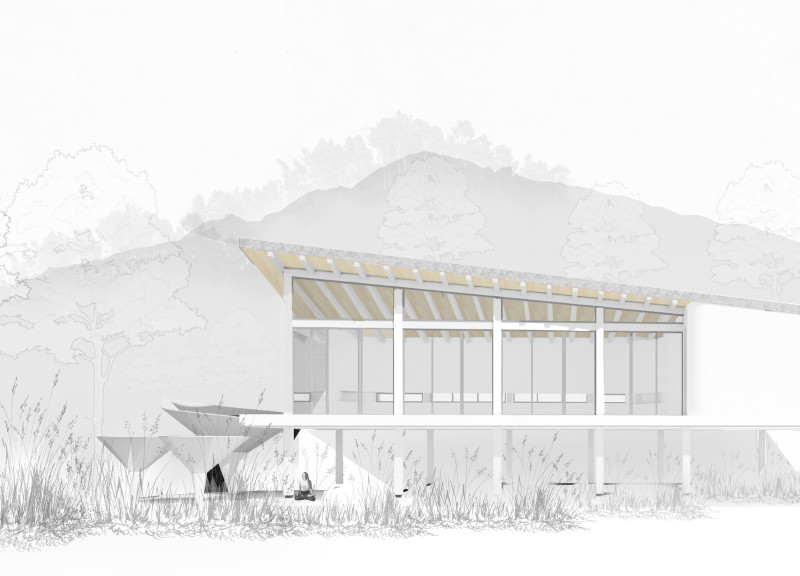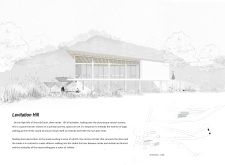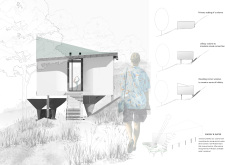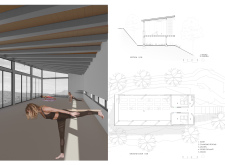5 key facts about this project
At its core, the project serves as a multifunctional space that fosters community interaction, collaboration, and engagement. Through its carefully considered layout, the design facilitates a natural flow between various areas. Open spaces encourage social interaction, while designated areas allow for privacy and focused activities. This balance is crucial in contemporary architecture, where the emphasis on user experience plays a significant role in a building's effectiveness and appeal.
One of the notable aspects of the project is its unique approach to materiality. The building utilizes a combination of concrete, glass, wood, and steel, each selected for specific qualities that enhance the overall aesthetic and functional aspects of the design. Concrete establishes a robust structural base, contributing to the building's longevity and durability. Extensive glass elements not only maximize natural light but also create a sense of transparency and connection to the external environment. This intentional use of materials helps create a welcoming atmosphere that integrates the building within its surroundings.
The incorporation of wood, particularly in interior spaces, adds warmth and texture, promoting a sense of comfort for occupants. Steel is strategically used for structural support, allowing for expansive open areas without compromising stability. Such material choices are indicative of the thoughtful design philosophy underpinning the project, where every element serves a clear purpose while contributing to the overall architectural narrative.
Focusing on the unique design approaches, the project distinguishes itself through the integration of landscape architecture. Outdoor spaces are not merely adjuncts to the building; rather, they are thoughtfully designed to enhance the user experience. Green roofs and landscaped terraces create inviting areas for relaxation and interaction, further blurring the lines between indoor and outdoor living. This seamless transition is a hallmark of modern architectural practices that prioritize ecological sustainability and human well-being.
Additionally, sustainable technologies are woven into the infrastructure, reflecting a commitment to reducing environmental impact. Features such as rainwater harvesting systems and energy-efficient systems ensure that the building operates efficiently while promoting awareness of ecological responsibility among its users.
The building's overall form and configuration contribute significantly to its presence within the local architectural landscape. Rather than adhering to conventional shapes, the design embraces a dynamic composition that invites curiosity. Angled volumes and varied heights create a sense of movement and flow, visually engaging pedestrians and enhancing the site's overall character.
Overall, this project is a compelling example of contemporary architecture that successfully merges form, function, and sustainability. By prioritizing user experience, integrating with the landscape, and utilizing thoughtful material choices, the design speaks to the needs and aspirations of its community.
For a more detailed exploration of the architectural ideas and design strategies employed in this project, including architectural plans and sections, interested readers are encouraged to delve deeper into the project presentation, where they can gain further insights into its thoughtful design and execution.


























